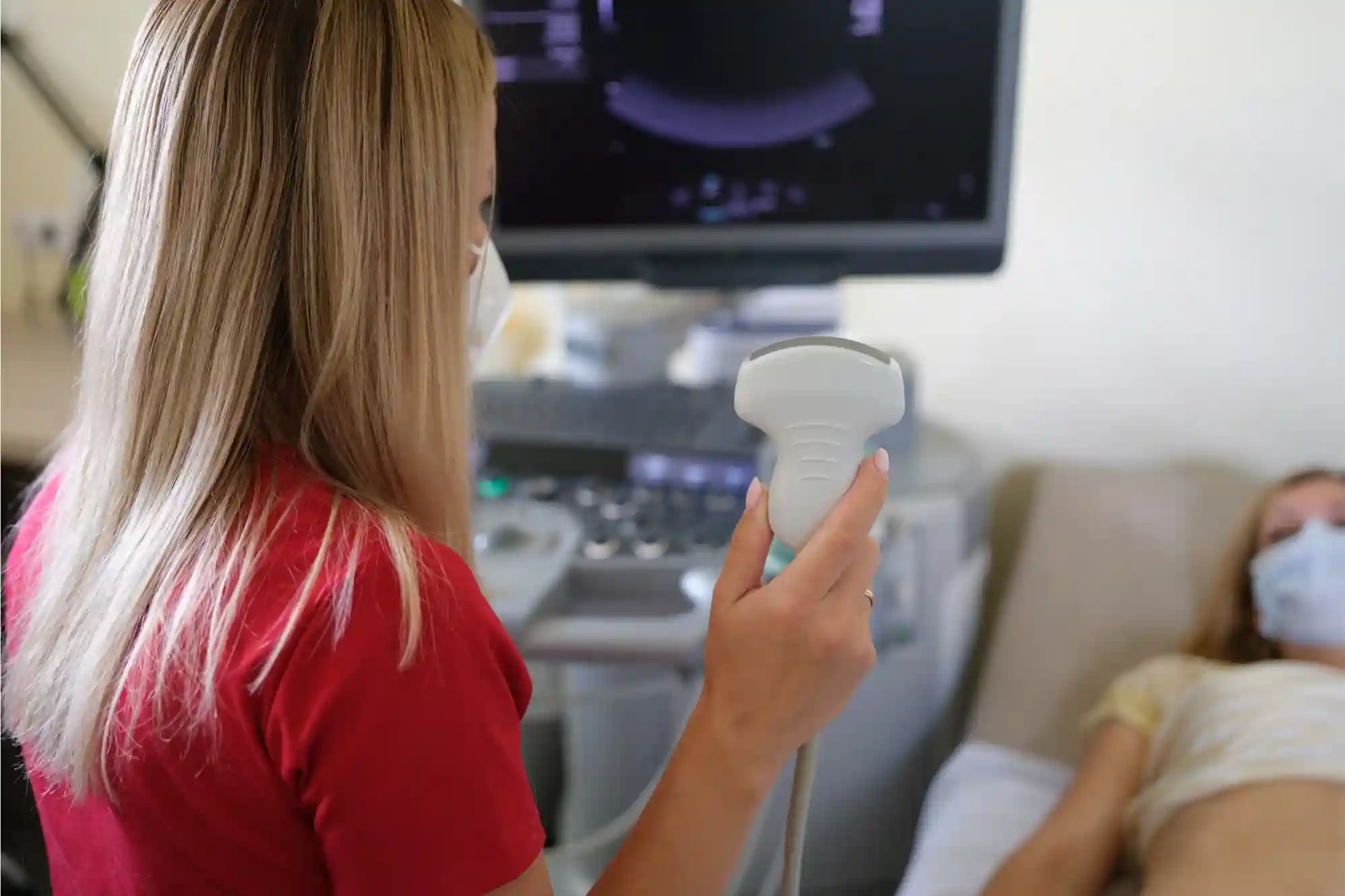Selecting a suitable transducer for abdominal ultrasounds is essential to guaranteeing accurate imaging and diagnosis. At Lincs Health, we place a high value on using modern technologies in order to give our patients the best treatment possible. However, how can one determine which transducer is best for abdominal ultrasound?
During an ultrasound, a transducer is a movable instrument that transmits and receives sound waves. These sound waves produce images of interior organs, providing an alternative method to diagnose illnesses, including kidney stones, gallbladder problems, and liver disease that affect the abdomen. The clarity of the images generated is directly affected by the type and quality of the transducer, which can affect the diagnostic accuracy.

There are a few types of transducers typically used in abdominal ultrasound, each with its own strengths:
The most popular option for abdominal ultrasounds is this one. Because it operates at a lower frequency—typically between 2 and 5 MHz—it can penetrate the body more deeply. Larger organs including the liver, kidneys, and stomach may be easily seen thanks to its curved form, which creates a wider field of view. Curved-array transducers are a standard tool at Lincs Health Center because of their effectiveness in abdominal scanning.
Linear transducers are often applied for surface structures, but they can also be used for thorough abdominal imaging, particularly when a higher resolution is needed. However, it is less useful for viewing deep organs because of its limited depth penetration (7 to 10 MHz). It is generally reserved for particular situations, such as pediatric patients or in-depth abdominal vascular examinations.
The phased-array transducer, which has a frequency range of 2 to 4 MHz and a smaller footprint, is perfect for getting clear pictures of deeper abdominal regions by going through between ribs. Although it’s less frequently used for standard abdominal ultrasounds, targeted imaging is mainly. When a particular location needs close attention, it can benefit significantly from it.
Choosing a suitable transducer guarantees clear pictures and helps prevent diagnostic mistakes. The ideal transducer for each scan is chosen by our qualified experts at Lincs Health (Pk) based on the patient’s body type, the area being scanned, and the depth of the organs. To get high-quality photos that allow more accurate diagnosis, the correct tools must be used.
The sensitivity of the transducer is one of the most important factors when choosing the best one for an abdominal ultrasound. The frequencies at which ultrasound transducers operate determine the depth to which sound waves can travel and the sharpness of the images that are produced. When scanning deep or massive abdominal organs, deeper penetration is essential, and lower-frequency transducers (around 2–5 MHz) work well for this. Lower frequencies, however, usually provide less resolution. Higher-frequency transducers (7–10 MHz) offer more clarity and detail but are less able to penetrate deeply. Hence, they are better suited for smaller organs or surface structures.
Since every patient is unique, choosing the best transducer for an abdominal ultrasound depends on factors like the size, shape, and nature of the illness under investigation. For example, a lower-frequency transducer is usually selected when patients have a greater body mass index (BMI). A higher-frequency transducer can be used to take more detailed pictures in circumstances where superficial organs or vascular structures need to be inspected or in thinner patients. Since no two patients are alike, Lincs Health makes use of its experience in transducer selection to guarantee that every scan provides the best possible diagnostic information.
In recent years, significant developments have been seen in the field of ultrasound imaging, and the Lincs Health Center continues to be at the heart of these developments. The emergence of 3D and 4D ultrasound imaging, which enables more dynamic and detailed views of abdominal organs, is one of the most recent advancements in transducer technology. These advanced sensors can rotate and record from various angles, giving a more complete picture for medical analysis.
At Lincs Health, we’re dedicated to giving you the best care possible while using modern technology to support your search for ideal health. Our staff is here to help you with any questions that you have about abdominal ultrasound scans or other medical services, as well as with scheduling an appointment.
A Specialized Radiology Center in Lahore is Providing Body , MSK, OBS Gynea TVS, Endocavity & Doppler Under Supervision of UK Trained Consultant in Lahore.
©2025, EBTECHSOL, All Rights Reserved.